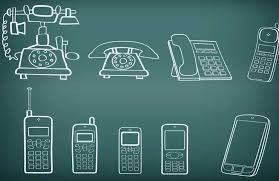Smartphones have become an inseparable part of modern life. From morning alarms to late-night browsing, these devices shape how we communicate, work, and even relax. Yet, this transformation did not happen overnight. The History of Smartphone takes us through a fascinating journey, from bulky gadgets of the past to sleek, intelligent devices that now serve as our personal assistants, entertainment hubs, and gateways to the world.
Early Mobile Communication – The 1970s and 1980s
The roots of smartphones trace back to the invention of mobile phones. In 1973, Martin Cooper of Motorola made the first handheld mobile call. The device, known as the DynaTAC, weighed nearly 2.5 pounds and offered just 30 minutes of talk time after 10 hours of charging.
During the 1980s, mobile phones became slightly more common but remained expensive and limited. They were mostly used by business executives and professionals. Although these early phones were not “smart,” they set the stage for portable communication.
The Birth of Smartphones – The 1990s
The 1990s introduced the idea of combining telecommunication with computing. IBM launched the Simon Personal Communicator in 1994, widely considered the first true smartphone. It offered a touch screen, calendar, contacts, and even the ability to send faxes and emails.
Nokia soon entered the scene with its durable phones and iconic Snake game, gaining massive popularity. By the late 1990s, the concept of adding extra features beyond calling and texting had taken hold, signaling the dawn of smartphones.
Smartphones in the Early 2000s
BlackBerry and Business Communication
BlackBerry revolutionized communication in the early 2000s by introducing secure email and full QWERTY keyboards. Professionals loved its practicality, and soon, BlackBerry became the device of choice in corporate environments.
Symbian and Nokia’s Dominance
Nokia continued its dominance with the Symbian operating system. Models like the Nokia 6600 and N95 allowed multimedia features, web browsing, and simple apps. These devices represented the growing demand for more than just calling features.
Palm and Windows Mobile
Palm devices offered stylus-based touch input, while Microsoft’s Windows Mobile entered the competition with productivity-focused smartphones. These devices hinted at the potential for mobile computing but lacked the simplicity and appeal needed for mass adoption.
The iPhone Revolution – 2007
In 2007, Apple changed everything by introducing the iPhone. Unlike earlier devices, the iPhone offered a large multi-touch screen, replacing physical keyboards with intuitive touch controls. Its sleek design, user-friendly interface, and powerful features created a new era of smartphones.
The App Store, launched in 2008, turned smartphones into customizable tools. Developers worldwide created apps for productivity, gaming, shopping, and social networking. For the first time, users could truly personalize their mobile experience.
The Rise of Android
While Apple shaped the market, Google introduced Android as an open-source operating system. This allowed multiple manufacturers—Samsung, HTC, LG, and others—to produce Android-based smartphones.
Samsung’s Galaxy series became a strong competitor to the iPhone, offering larger screens, better cameras, and varied price points. Android’s flexibility helped it dominate global markets, giving billions access to smartphones.
Smartphones in the 2010s – Power in Your Pocket
Hardware Advancements
By the 2010s, smartphones evolved rapidly. High-resolution cameras, fingerprint scanners, facial recognition, and powerful processors transformed phones into versatile devices.
Social Media Explosion
Platforms like Facebook, Instagram, WhatsApp, and TikTok flourished thanks to smartphones. Communication shifted from voice calls to instant messaging, video chats, and social updates.
Everyday Life Integration
Smartphones became essential for banking, shopping, fitness tracking, and navigation. They replaced standalone devices like cameras, MP3 players, GPS systems, and even wallets with mobile payment solutions.
Modern Smartphones – 2020s and Beyond
Today, smartphones are pocket-sized computers with AI capabilities, 5G connectivity, and advanced ecosystems. Foldable screens, AR (augmented reality), and advanced camera systems push the limits of innovation.
Companies like Apple, Samsung, Xiaomi, and Google compete fiercely, releasing devices that balance performance, design, and affordability. Smartphones now connect with smartwatches, home devices, and vehicles, making them central to the Internet of Things (IoT).
Cultural Impact of Smartphones
Smartphones influence how people work, learn, and interact. Remote work, online education, and telemedicine rely heavily on mobile technology. Social movements and global news spread instantly through mobile connectivity.
At the same time, smartphones raise concerns about screen addiction, data privacy, and environmental impact. Their role in shaping society remains both positive and challenging.
Interesting Facts About Smartphones
- The average person checks their smartphone over 100 times a day.
- More than 6.5 billion people worldwide own a smartphone.
- Apple sold over 1.5 billion iPhones since its launch.
- Smartphones now have more computing power than NASA’s computers during the Apollo moon missions.
- The first camera phone was introduced in Japan in 2000.
Why the History of Smartphone Matters
The History of Smartphone reflects human ambition to stay connected and innovate. From heavy brick-like devices to sleek machines with limitless apps, smartphones transformed society. They influence communication, entertainment, commerce, and even politics. Understanding their journey shows how technology can reshape the world in just a few decades.
Conclusion
From Motorola’s first mobile call to today’s AI-driven devices, the History of Smartphone reveals an extraordinary evolution. What began as a luxury tool for a few has become a daily necessity for billions. Smartphones continue to evolve, and as technology advances, they will shape the future in ways we cannot yet imagine.







